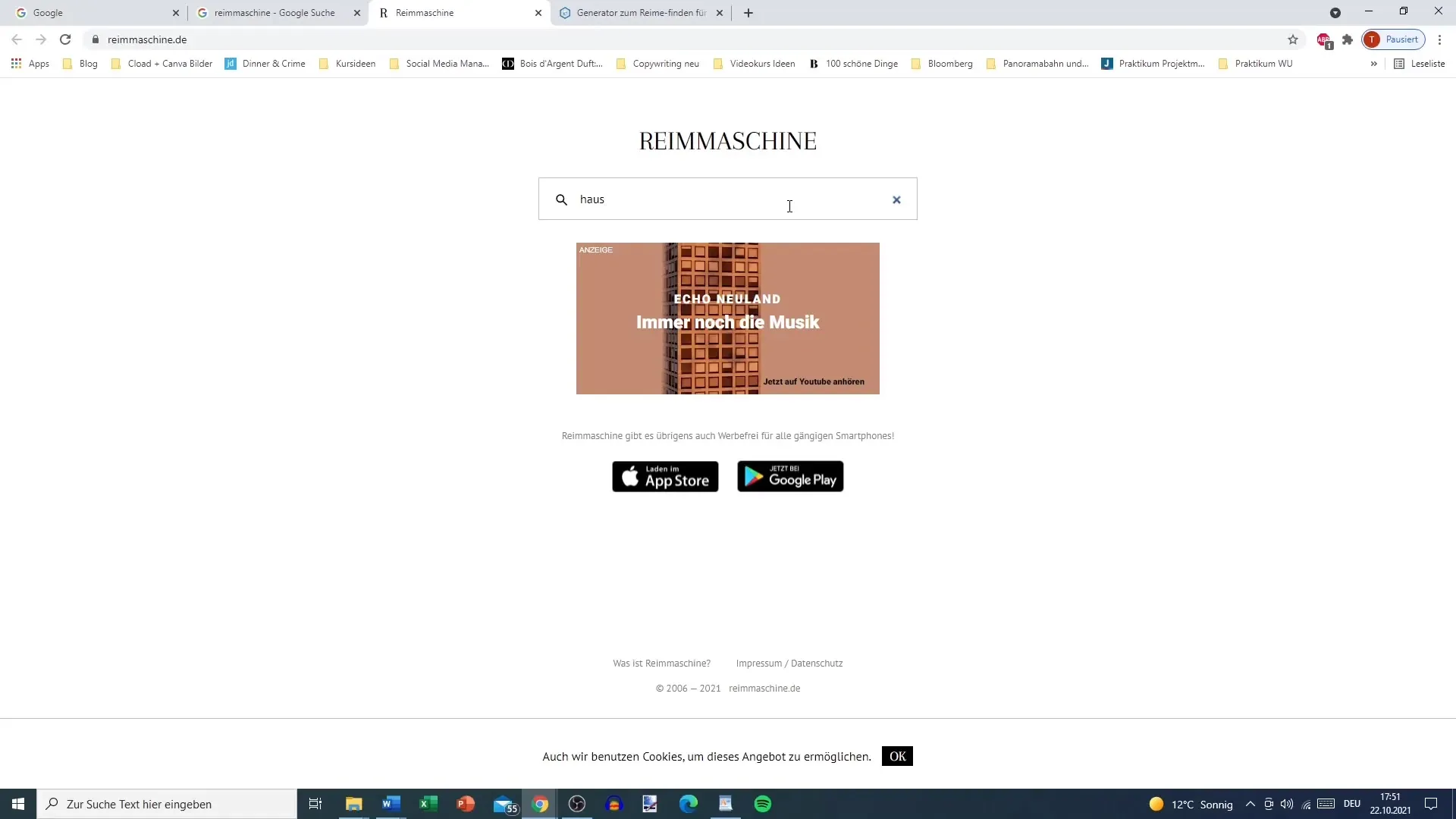A fresh, catchy text is worth its weight in gold, especially when it comes with melodious rhymes. Rhymes not only give your texts rhythm, but also a special sound that stays in the reader's memory. In this guide, you will learn step by step how to find effective rhymes using simple tools.
Main Insights
- Rhymes are words or phrases that sound similar and therefore fit rhythmically together.
- There are various tools to find rhymes, including the "Rhyme Machine" and the "Rhyme Finder Generator".
- When using rhymes, pay attention to the number of syllables to maximize the sound effect.
Understanding and Applying Rhymes
Rhymes are more than just pretty words. They create a connection between individual parts of the text and ensure that the reader lingers on your words for a long time. Therefore, it is important to understand the basics of rhymes. Rhymes are based on the fact that different words sound the same or very similar. A simple example is "house" and "mouse". These are a classic rhyme pair, as the words sound almost identical, differing by only one letter.
A tool that helps you quickly find these rhymes is the "Rhyme Machine". Here, you can enter a single word, and the tool will provide you with a list of suitable rhymes. For example, if you enter "house", you will get suggestions like "mouse", "grouse", or "blouse". Such rhymes are particularly effective when used in a sentence or verse.

Another important criterion when selecting rhymes is the number of syllables. If you choose a one-syllable word, it is best to look for other words with one syllable as well. A rhyme like "house" and "mouse" sounds harmonious, while "house" and "noble house" seem less elegant due to the differing number of syllables. Keep your rhymes as consistent as possible in syllable structure to ensure a pleasant sound.
To demonstrate the importance of syllable count, let's also look at a two-syllable rhyme. Take "winter" and "sprinter": Both words have two syllables and sound good together. However, when using lengthy or complex rhymes, the sound often becomes less smooth. This can affect the readability and overall flow of your texts.
Rhyme Tools: A Look at the Best Options
As mentioned before, there are numerous tools for rhyme searching. Here, I would like to introduce two of the most well-known and useful ones: the "Rhyme Machine" and the "Rhyme Finder Generator".
The Rhyme Machine
The "Rhyme Machine" is an intuitive German tool that offers various rhyme combinations. Simply enter your desired word and click "Search". The machine will provide you with a broad selection of rhyme words, sorted alphabetically or by number of syllables. It is particularly useful that the tool can also display rhymes with two, three, or more syllables.

For instance, if you enter the word "winter", you will receive many creative combinations such as "cinder", "behinder", and other interesting suggestions. Even if some of the suggestions lack the desired elegance, you can still use them for experimentation.
The Rhyme Finder Generator
Another practical tool is the Rhyme Finder Generator on the website tools.namerobot.de. Here, you can also enter a word and search for suitable options on the website. The search not only provides you with German rhymes but often shows English suggestions as well, offering more variety for creative texts.

After entering your search term, such as "house", you will be presented with multiple rhyme variations. This gives you the opportunity to choose from a wide range of rhymes that best meet your requirements.
Boosting Creativity Through Rhymes
Using rhymes can not only give structure to your text but also unleash your creativity. Play with different approaches and combine them with metaphors or alliterations. A memorable title that uses both a rhyme and a metaphor will stick in the reader's memory and make your text more engaging.
Remember that the sound effect often determines whether a text is well-received or not. A well-placed rhyme can make a story more vivid or make an advertising text more appealing.
Final Thoughts
Now you know the basic principles of rhyme technique as well as some useful tools to quickly and effectively develop ideas. Use these tools to enrich your writing process and provide your readers with content that engages and captivates them.
Summary
Rhymes are powerful tools in language. Use the tools presented to compose effective rhymes that make your texts more vibrant and memorable.
Frequently Asked Questions
What is a rhyme?A rhyme is a connection of words or phrases that sound similar and rhythmically fit together.
How can I find rhymes for my texts?You can use tools like the rhyme machine or the rhyme generator to find suitable rhyme words.
Why is the number of syllables important?The number of syllables affects the sound and readability of a rhyme. Consistent syllable counts ensure harmonious rhymes.
Are there also English rhymes?Yes, some of the mentioned tools provide both German and English rhyme suggestions.
How can rhymes improve my texts?Rhymes give rhythm and sound to your texts, which appeals to readers and makes the content more memorable.


